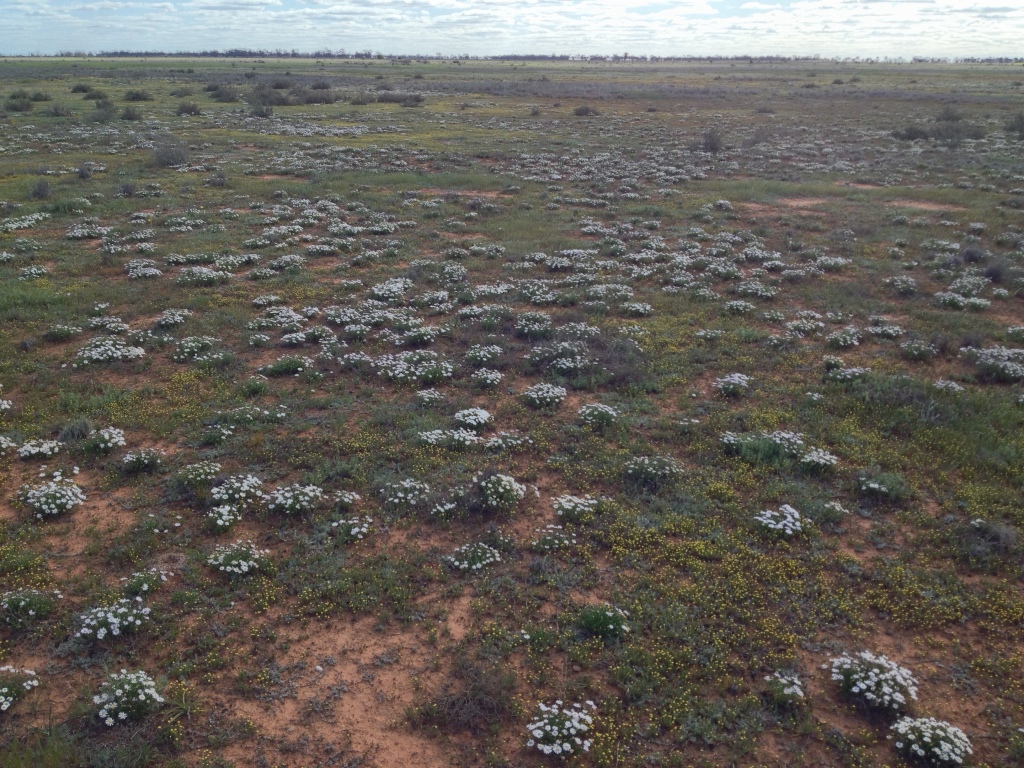Minuria leptophylla
DC. Minnie DaisyDecumbent to ascending (rarely quite erect) herb to 20(–30) cm high, mostly branched near base; stems sparsely and minutely pubescent, finally glabrous. Leaves linear, 5–20 mm long, 0.5–1 mm wide, sparsely pubescent to glabrous, entire, acute. Capitula solitary, terminating branches; inner involucral bracts narrowly obovate, 4–6 mm long, 1–1.5 mm wide, with broad membranous margins, obtuse, apex fimbriate, outer bracts smaller and relatively narrower; ray florets white to pale lilac, ligules 4–7 mm long. Ray cypselas obovate, 1.5–3.5 mm long, densely silky-pubescent, pappus bristles 30–40, 2.5–5 mm long, barbellate; disc cypselas linear, glabrous, with pappus bristles dimorphic, the smaller 0.5–1.2 mm long, the 2–6 longer ones 2–3.5 mm long. Flowers mostly Jun.–Oct.
LoM, MuM, Wim, VVP, VRiv, RobP, MuF, GipP, OtP, Gold, CVU, NIS. All mainland States. Moderately common on loamy or lighter clay soils of the north-west of the State, but depleted through agricultural clearing of better land. Formerly rather frequent in grasslands between Melbourne and Geelong, but now rare in this area.
Walsh, N.G. (1999). Minuria. In: Walsh, N.G.; Entwisle, T.J., Flora of Victoria Vol. 4, Cornaceae to Asteraceae, pp. 877–880. Inkata Press, Melbourne.
 Spinning
Spinning


